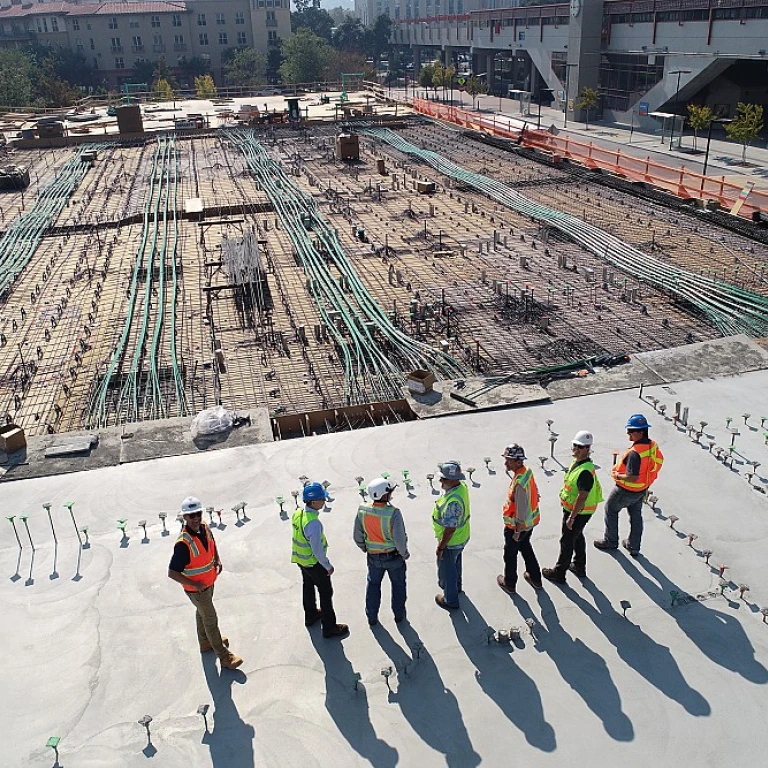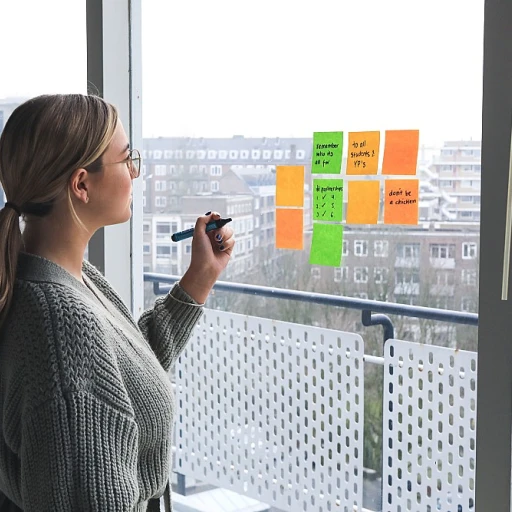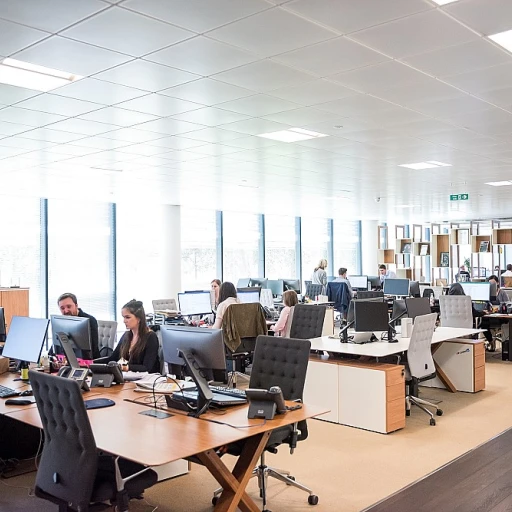Understanding Candidate Experience
The Heart of Candidate Experience
Candidate experience might sound like a buzzword from the HR department, but it's more than just an industry term. It's the heartbeat of how potential employees perceive a company during the hiring process. Imagine you're applying for a dream job, scrolling through an online application portal. A smooth, stress-free process can leave you impressed, while a clunky, confusing one might frustrate you so much that you abandon the application altogether.
Whether you're a big corporation or a small startup, understanding the candidate's perspective is essential. Candidates today, much like customers, have high expectations. They want interactions that are efficient, transparent, and respectful. With options just a click away, businesses risk losing top talent if their application portals are outdated or difficult to use.
Companies are increasingly investing in their hiring processes, knowing that a positive experience can boost their brand. By paying close attention to the technology and customer service offered during the application process, organizations can show that they value applicants' time and effort. This approach not only helps in attracting skilled candidates but also sets the tone for future employee engagement and customer service.
If you're on a quest to improve your candidate experience, looking at how to enhance the job application journey can bring valuable insights. You could explore the best practices that cater to user needs and prioritize a simplified, streamlined process. Keep in mind, candidates often parallel the ease of the application process with the quality of work environment your company might offer. It's not just about applications; it's about creating an inviting first impression that reflects your company culture and values.
Designing an exceptional candidate experience isn't a one-size-fits-all; it's a crucial task that involves continuous learning and improvement, ensuring you're always one step ahead in this competitive environment.
The Role of Application Portals in Candidate Experience
Improving the Candidate Experience with Application Portals
Candidates face a plethora of emotions and experiences during their job hunt. The application portal often serves as their first interaction with a company, setting the tone for the entire process. A thoughtfully designed portal can shape a positive impression and reduce candidate drop-off rates significantly.
Employers today have recognized that application portals aren’t just static gateways to upload resumes—they’re extensions of their company’s brand and values. User-friendly portals create an inviting environment for potential hires, making the application process smoother and more intuitive. From streamlined forms to mobile compatibility, businesses need to focus on design aspects that resonate with users.
Some might ask why the application portal holds such a weighty role in a candidate's journey. Well, in many ways, it operates as a service portal—centralized and accessible to give candidates all the necessary information, guiding them gently through each step.
To illustrate, think about a company that integrates project management tools with their portal software, allowing candidates to track the status of their applications, receive real-time service portal updates, and even access personalized support through a client portal. Such avenues allow an organization to showcase its commitment to providing excellent customer service to potential employees.
When candidates breeze through a user-friendly experience—this is where companies shine brightest. Simple gestures, like allowing mobile access or integrating third-party admissions portal services, can signal to applicants that the organization values their time and effort. Additionally, offering clients a free trial to interact with the portal or even gathering feedback for knowledge management are practical strategies.
But let’s not sugarcoat it—if candidates face hurdles navigating a cumbersome job application process, they might opt to look elsewhere. Thus, avoiding common pitfalls and making user experience the focal point requires a solid plan. And while technology can sometimes be overwhelming, embracing the right tools and utilizing reporting analytics effectively can transform user experiences with tangible improvements.
For businesses aiming to make that leap from satisfactory to outstanding candidate experiences, concepts like intuitive design and customer portal personalization come heavily recommended. For more insights on how to minimize application drop-off rates, click here:
source.
Overall, the role of application portals can’t be understated—they’re not just about managing and processing admissions—they’re about making every candidate feel valued and welcomed from the start.
Key Features of User-Friendly Application Portals
Must-Have Elements for a Seamless Platform
So what makes an app portal user friendly? A smooth experience for candidates relies on a few must-have elements, ensuring they glide through the application process rather than stumble. Here are some key considerations that help create a friendly user experience in portals:
- Simplicity and Clarity: Nobody has the time to decipher a confusing process when applying for a new gig. Clear instructions and intuitive navigation are crucial. Keep things simple – less is often more.
- Mobile Compatibility: With so many of us glued to our phones, it’s essential to have a portal that’s both app and mobile-friendly. Candidates should be able to complete the application process just as easily on their mobile device as they do on a desktop.
- Easy Access: Candidates appreciate having easy access to portals anytime they need. This means minimal barriers – no cumbersome logins or crazy password requirements. Seamless access spells satisfaction.
- Interactive Features: Think engaging features like chat support or instant notifications. These tools offer timely assistance and feedback and enhance candidate engagement.
- Self-Service Options: Let candidates manage their applications on their own – upload documents, modify details, check statuses. Personal control contributes to a positive vibe.
- Multilingual Support: Global applicants should feel welcome too. Providing a language option makes the entire process way more inclusive and removes communication barriers.
- Progress Tracking: Keep users informed about where they stand in the application process. Status updates or tracking steps demystify the waiting game and offer peace of mind.
Embrace these elements to design a portal that doesn’t just process applications but creates a
memorable encounter for every candidate who logs in, keeping them returning for more.
Common Pitfalls in Application Portals
Common Mistakes in Application Portals
Creating a seamless user experience in application portals can be tricky. Even with the best intentions, businesses often stumble over some common pitfalls. Let's break down these challenges to help you avoid them.
Overcomplicated Application Process
One of the biggest issues is a complex application process. When users face too many steps or overly detailed forms, they tend to abandon the process. Simplifying the steps and asking only for essential information can make a huge difference in keeping applicants engaged. Remember, a straightforward process is a user-friendly one.
Lack of Mobile Optimization
In today's mobile-driven world, not having a mobile-friendly portal can be a deal-breaker. Many applicants prefer to apply on-the-go, so ensuring your portal is responsive on mobile devices is crucial. A seamless mobile experience can significantly enhance the user experience and reduce drop-off rates.
Poor Navigation and Design
A cluttered or confusing design can frustrate users. Clear navigation and a clean design are essential for guiding applicants through the portal. Users should be able to easily find what they need without getting lost in a maze of links and buttons.
Lack of Communication and Feedback
Once users submit their applications, they often feel left in the dark. Providing timely updates and feedback through the portal can improve the overall experience. Acknowledging receipt of applications and offering status updates can make users feel valued and informed.
Technical Glitches and Downtime
Nothing is more frustrating than encountering technical issues during the application process. Regular maintenance and testing can help prevent glitches and ensure the portal runs smoothly. Reliable portal software is essential to provide a consistent service.
By addressing these common pitfalls, businesses can create a more effective and user-friendly application portal. This not only improves the candidate experience but also reflects positively on the company's brand and customer service.
Best Practices for Designing User-Friendly Portals
Designing Portals That Speak to Users
Creating a user-friendly application portal is like setting up a welcoming front door for your business. It’s the first impression candidates get, and you want it to be a good one. Think about it: when you visit a website, what makes you stay? It's usually an easy-to-navigate interface, quick load times, and clear information. The same principles apply to application portals.
Keep It Simple, Keep It Smart
Simplicity is key. A cluttered portal can be a nightmare for users. Streamline the application process by minimizing the number of steps and making sure each step is intuitive. Use clear labels and instructions. Avoid jargon and technical terms that might confuse applicants. Remember, the goal is to make the process as smooth as possible.
Mobile-Friendly Is a Must
In today's mobile-first world, ensuring your portal is mobile-friendly is non-negotiable. Many candidates will access your application portal on their phones or tablets. A mobile-optimized design means the portal adjusts seamlessly to different screen sizes, providing a consistent experience across devices. This is not just about aesthetics; it's about functionality and access.
Personal Touches Matter
Personalization can make a huge difference. Use the candidate's name in communications and provide a dashboard where they can track their application status. This not only makes the experience more engaging but also shows that you value them as individuals, not just another application.
Integrate Helpful Resources
Consider adding a knowledge base or FAQ section within the portal. This can help answer common questions and reduce frustration. A well-organized knowledge management system can empower candidates to solve issues on their own, enhancing their overall experience.
Feedback Loop
Finally, don’t forget to ask for feedback. After the application process, invite candidates to share their thoughts on the portal's usability. Use this feedback to make continuous improvements. This not only helps you refine the portal but also shows candidates that you value their input.
Incorporating these practices into your application portal design can significantly improve the user experience, making the application process more efficient and enjoyable for everyone involved. By focusing on simplicity, mobile optimization, personalization, and feedback, businesses can create a portal that truly serves its users.
Measuring the Success of Application Portals
Tracking Success with Analytics
Measuring the success of your application portals isn't just about numbers; it's about understanding how users interact with your portal. Analytics can provide insights into user behavior, helping you to refine the user experience. You can track metrics like the number of completed applications, time spent on each section, and drop-off rates. This data helps businesses identify which parts of the application process might need improvement.
Feedback: The Heartbeat of Improvement
Feedback from applicants is invaluable. Encourage users to share their experiences with your portal. This can be done through surveys or direct communication channels. Listening to your applicants can reveal pain points that analytics might miss. It’s a chance to hear directly from those who use your service portal and make necessary changes to improve their experience.
Regular Updates and Testing
A successful portal requires regular updates and testing. Technology and user expectations evolve, and your portal should too. Conduct regular testing to ensure that your application portal is user-friendly and functions smoothly across different devices, including mobile. This ensures that users have a seamless experience, whether they’re accessing the portal from a desktop or a smartphone.
Customer Service and Support
An often overlooked aspect of measuring success is the quality of customer service associated with your portal. Users should have easy access to support if they encounter issues. Effective customer service can significantly enhance the overall experience and ensure that any problems are quickly resolved.
Using Third-Party Reviews
Third-party reviews and ratings, such as a Capterra rating, can provide an external perspective on your portal's performance. These reviews can highlight areas of strength and opportunities for improvement. They also build trust with potential applicants who may rely on these reviews to make decisions about whether to engage with your application process.
Benchmarking Against Competitors
Finally, benchmarking your portal against competitors can provide a broader context for your performance metrics. Understanding where your portal stands in comparison to others in the industry can help you identify areas for improvement and innovation. This competitive analysis ensures that your portal remains a top choice for applicants.
By focusing on these areas, businesses can create a user-friendly experience that meets the needs of applicants and enhances the overall application process.




